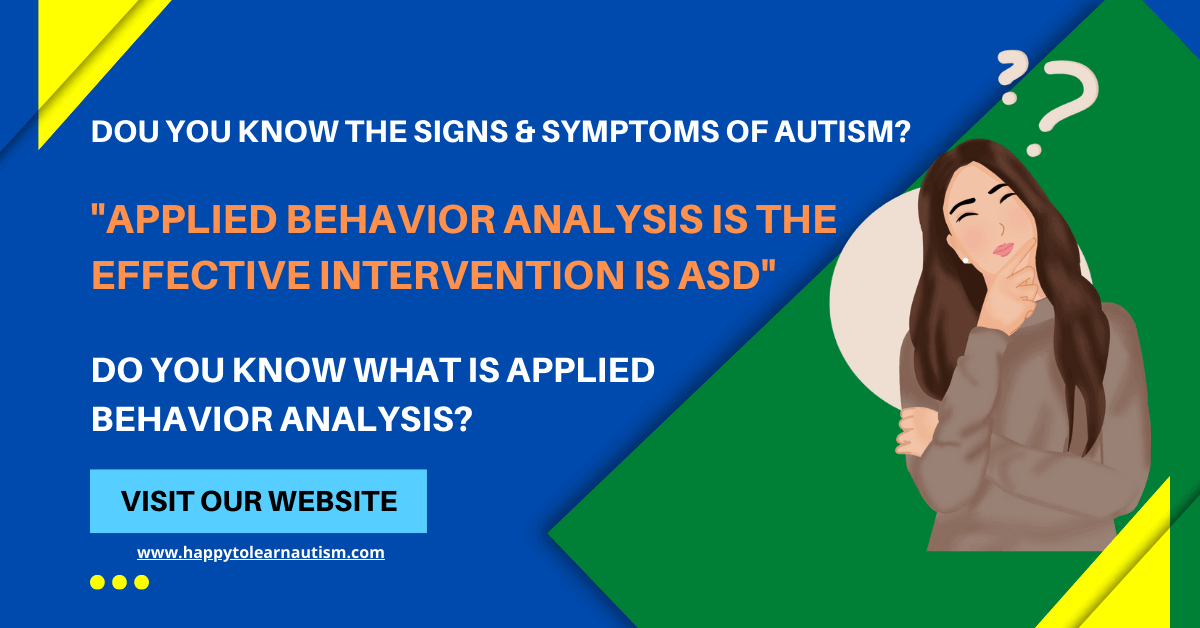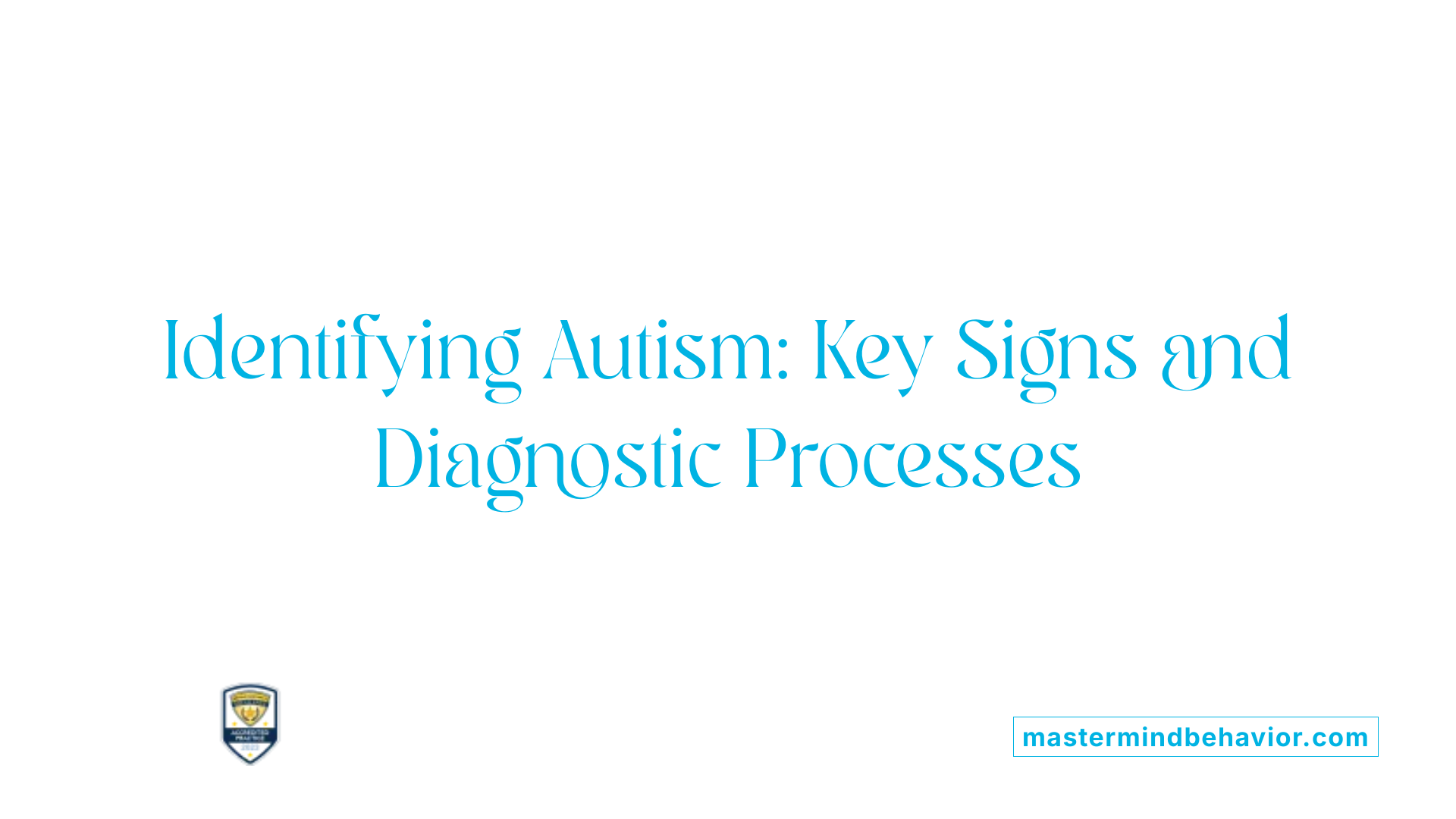Turning challenges into growth using Autism Behavioral Therapy tools
Turning challenges into growth using Autism Behavioral Therapy tools
Blog Article
Understanding the Influence of Behavioral Autism on Every Day Life and Social Communications
You may not understand just how deeply behavior autism affects every day life and social interactions. People on the spectrum commonly navigate a world filled with interaction hurdles and sensory overload. These challenges can lead to stress and seclusion, influencing their partnerships and overall well-being. Recognizing these nuances is essential for fostering supportive atmospheres. What approaches can we apply to produce even more inclusive spaces and significant connections? The solutions might surprise you.
Defining Behavior Autism and Its Characteristics
Behavior autism, typically referred to as autism range condition (ASD), incorporates a variety of conditions characterized by obstacles in social communication, communication, and recurring behaviors. You could discover that people with ASD usually have a hard time to analyze social cues, which can bring about misunderstandings in conversations. They might discover it tough to develop eye call or take part in tiny talk, making social situations feel frustrating.
Interaction difficulties can materialize in various methods, from postponed speech advancement to a choice for making use of fewer words. Recurring behaviors, such as hand-flapping or rocking, can function as coping systems to take care of stress or sensory overload. These features can profoundly influence every day life, making it essential for you to comprehend and sustain those with ASD. By recognizing these qualities, you can cultivate an environment that promotes approval and urges reliable interaction, helping individuals with autism thrive in their daily interactions.
The Spectrum of Autism: Comprehending Variability in Behavior
Autism range problem (ASD) isn't a one-size-fits-all diagnosis; it varies extensively amongst people. You may observe that some people with ASD exhibit moderate signs and symptoms, while others might encounter more significant challenges. This irregularity can manifest in actions, rate of interests, and sensory level of sensitivities. You might come across individuals who are extremely verbal and involve conveniently in discussions, while others could favor singular activities or communicate non-verbally.
Furthermore, the means individuals with ASD react to sensory input can differ considerably; some may be bewildered by loud noises or bright lights, whereas others flourish in boosting atmospheres. The spectrum also consists of differences in social communications; some people may battle to translate social cues, while others navigate social settings with loved one ease. Recognizing this irregularity is important, as it helps you value everyone's distinct experience and tailor support to their specific requirements, fostering a much more inclusive atmosphere for every person.
Communication Difficulties Faced by Individuals With Autism
When you connect with individuals on the autism spectrum, you might observe their unique interaction difficulties. They typically deal with difficulties with both spoken and nonverbal cues, which can affect their social interactions. Comprehending these obstacles is crucial for fostering much better connections and support.

Verbal Communication Problems
Lots of individuals on the autism spectrum experience spoken interaction troubles that can considerably impact their everyday communications. Your tone, pace, or volume may not line up with social expectations, creating others to misunderstand your intentions. Recognizing these challenges can assist you and your support network establish methods to boost interaction and foster far better connections with others in your day-to-day life.
Nonverbal Communication Obstacles
Verbal communication isn't the only obstacle people on the autism spectrum face; nonverbal communication barriers can be simply as significant. You could find it tough to analyze body movement, faces, and eye call, which are vital for reliable communication. These challenges can bring about misconceptions or false impressions of social cues, making communications really feel complicated or overwhelming. You may battle to reveal your very own emotions through nonverbal means, leaving others uncertain of your sensations or purposes. This disconnect can develop sensations of isolation and stress. Identifying these obstacles is crucial for cultivating understanding and empathy in your communications. By resolving nonverbal communication, you can locate strategies to improve your social experiences and boost your total lifestyle.
Social Interaction Effects
Social communications can commonly feel overwhelming due to the one-of-a-kind interaction challenges faced by people with autism. Identifying these difficulties can assist you locate techniques to enhance communication, such as practicing social skills in safe setups or using visual help. Recognizing your needs allows you to browse social communications with higher self-confidence and convenience.
Social Communication and Connection Building in Autism
While structure relationships can be testing for individuals with site here autism, comprehending their distinct viewpoints and communication designs can cultivate meaningful connections. You may see that numerous people on the spectrum favor direct communication and might fight with social cues or small talk. By being simple in your communications, you can assist develop an atmosphere where they really feel comfortable.
Involving in shared passions can also offer as a bridge to deeper connections. Whether it's a leisure activity, a favored program, or a shared enthusiasm, these usual threads can open doors to friendship.
Every Day Life Regimen: Browsing Obstacles and Approaches
Navigating day-to-day life routines can be particularly challenging for people with autism, particularly when unexpected modifications happen. You might find comfort in having an organized timetable, as it aids you expect what's next. When disruptions happen, it's typical to really feel anxious or overwhelmed. To browse these challenges, take into consideration carrying out aesthetic timetables or checklists. These devices can offer clarity and peace of mind.
Developing a routine that Visit This Link includes sensory breaks can additionally be helpful. This aids produce an understanding atmosphere.
Lastly, practice mindfulness techniques to handle tension and anxiousness. Straightforward breathing workouts or basing strategies can make a substantial distinction. By including these techniques, you can boost your everyday regimen and minimize disturbances, making life feel a lot more convenient.
Strengths and Capacities of Individuals on the Autism Range
Comprehending everyday life routines is simply one element of the autism experience. Lots of people on the autism spectrum have impressive strengths and abilities that establish them apart. You might find that your interest to information is outstanding, enabling you to succeed in jobs that need precision and focus. Your ability to assume outside package can lead to innovative services in numerous situations.
Additionally, your memory abilities usually radiate, particularly in locations of rate of interest. Aba Therapist. This propensity for retaining information can make you a beneficial resource in areas like art, innovation, or science. You may additionally show solid aesthetic thinking, enabling you to envision complex concepts and resolve issues artistically
In addition, your distinct point of view on the world can cultivate empathy and understanding in others, improving social communications. Embracing these toughness not only enhances your confidence but additionally helps others appreciate the diverse this skills you offer the table.
Creating Inclusive Atmospheres for Individuals With Autism
Creating inclusive environments for people with autism begins with creating sensory-friendly areas that satisfy their special demands. You can also promote chances for social communication, helping to build links and relationships. By making these adjustments, you'll contribute to a more inviting environment for every person.
Designing Sensory-Friendly Spaces
While designing sensory-friendly areas, it's vital to assess the one-of-a-kind needs of people with autism. Beginning by selecting soothing colors and soft lighting to produce a calming setting. When bewildered, include silent zones where people can reenergize and retreat. You'll intend to decrease loud noises and disturbances, utilizing soundproof products or white noise equipments to aid maintain tranquility. Think about responsive components like soft fabrics or fidget-friendly objects that can supply comfort. Identify that rooms are versatile, permitting easy reformation to suit various activities. Include visual schedules or clear signage to assist individuals navigate the space with confidence. By attentively incorporating these elements, you can develop a welcoming ambience that sustains sensory requirements and promotes overall well-being.
Promoting Social Communication Opportunities
Creating sensory-friendly rooms not just addresses individual convenience but additionally establishes the stage for purposeful social communications amongst people with autism. Encourage peer mentoring, coupling individuals with autism with supportive peers that can direct them via social situations. By applying these methods, you can improve social chances, helping individuals with autism develop relationships and reinforce their social skills in a risk-free, inviting setting.

Frequently Asked Concerns
Exactly How Can Buddies Assistance A Person With Behavioral Autism?
You can support a buddy with behavior autism by being individual, paying attention proactively, and valuing their boundaries. Take part in activities they take pleasure in, interact openly, and create a comfortable setting where they really feel valued and comprehended.
What Resources Are Offered for Moms And Dads of Kid With Autism?
You can discover different sources for parents of children with autism, consisting of assistance groups, educational internet sites, and regional community solutions. Linking with other moms and dads can likewise provide beneficial insights and shared experiences to aid browse difficulties.
Can Behavioral Autism Change In Time?

Yes, behavior autism can change over time. You might notice shifts in interaction, social abilities, and behavior as your kid expands. Early intervention and assistance frequently play crucial roles in these developmental adjustments.
Exactly How Do Sensory Sensitivities Impact Day-to-day Live?
Sensory level of sensitivities can make everyday experiences overwhelming. You may battle with brilliant lights or loud noises, causing stress or avoidance. Finding atmospheres that suit your needs can considerably boost your comfort and general everyday life.
What Are Typical Misconceptions Concerning Behavioral Autism?
You might think behavioral autism only impacts interaction skills, but it's more facility. Many presume individuals lack empathy or intelligence, which isn't true. Comprehending these false impressions helps foster acceptance and support for those on the range.
Behavioral autism, usually referred to as autism range condition (ASD), incorporates an array of problems defined by difficulties in social communication, interaction, and repeated actions.Social interactions can often really feel overwhelming due to the special interaction obstacles encountered by people with autism.Creating sensory-friendly areas not only addresses individual comfort but also establishes the stage for meaningful social interactions among people with autism. Encourage peer mentoring, pairing people with autism with encouraging peers that can lead them via social circumstances. By carrying out these techniques, you can enhance social chances, aiding people with autism develop relationships and enhance their social abilities in a risk-free, welcoming setting.
Report this page